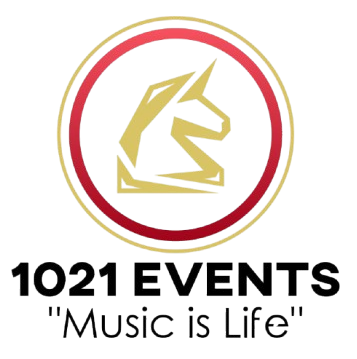Ever noticed how the right lighting can take a space from just a room to the place to be? When it comes to a dance floor, the best lights do so much more than just help people see. They create the entire vibe. This guide is going to skip the super-technical talk and get straight to what matters: how to use light to craft the perfect mood, whether it's for a dreamy wedding glow or a high-energy party.
Why Great Lighting Is Your Dance Floor's Secret Weapon
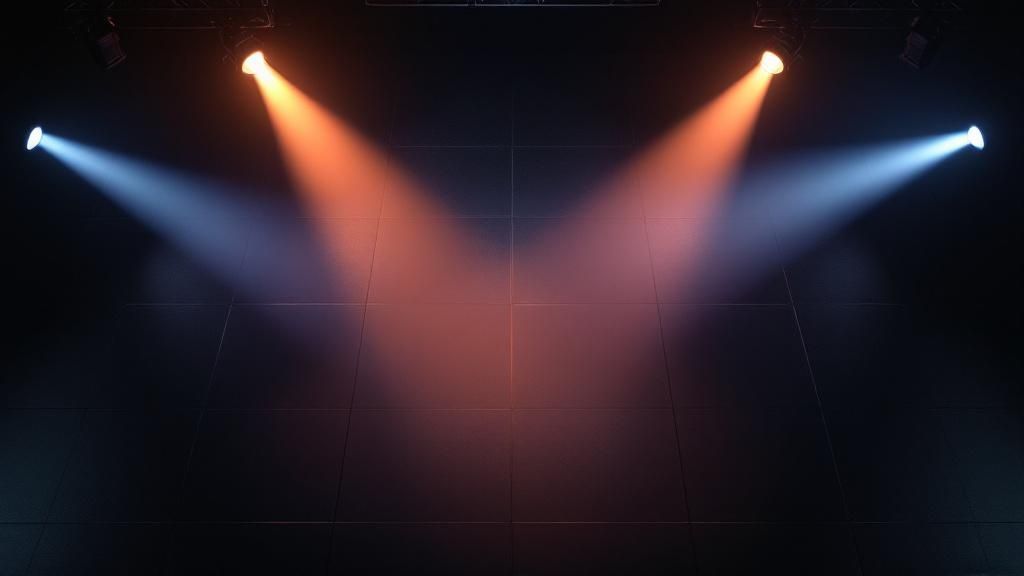
Think of your lighting setup as a silent DJ. It works hand-in-hand with the music to crank up the energy, give guests the confidence to let loose, and paint the perfect backdrop for every photo. Honestly, even the most amazing playlist can feel a little lifeless without it. A room that's just static and bright can make people feel like they're under a spotlight, keeping them stuck in their seats. But the moment the house lights go down and dynamic colors start washing over the room, the whole atmosphere changes.
This isn't just a hunch; it's a real psychological effect that professional event planners have known about for years. It’s not about just throwing up a few colored bulbs. It’s about building an experience that pulls people out of a generic venue and drops them right into the heart of a celebration.
Setting the Mood and Energy
At its core, dance floor lighting is all about defining the mood. Soft, warm amber and gentle pink tones can instantly create a romantic, intimate feeling—perfect for a couple's first dance. Flip the script, and you've got fast-moving, vibrant beams of blue, green, and red that scream high energy and practically dare people to stay seated.
A well-thought-out lighting design will:
- Get People Moving: Fun, moving lights help people feel less self-conscious and more willing to hit the dance floor. The color and motion create a fun, freeing atmosphere.
- Define the Party Zone: Lighting is a great way to visually fence off the dance floor from the dining or lounge areas. It creates a dedicated spot that naturally draws people in.
- Make Your Photos Shine: Good lighting makes every photo and video look incredible. It adds depth, drama, and emotion, turning simple snapshots into amazing keepsakes. It’s no surprise that event pros say 70% of an event's visual appeal comes down to the lighting.
Lighting is the most powerful tool you have for turning a simple get-together into an event people will talk about for years. It's the visual cue that tells your guests what kind of night it’s going to be, long before the DJ drops the first beat.
It’s About Feeling, Not Just Seeing
Ultimately, the goal isn't just visibility; it's about creating a feeling. The right lights make the dance floor feel alive. They can throb with the bass, sweep across the room in elegant patterns, or cast a soft, starlit glow that makes everyone look and feel amazing. This is how you transform a physical space into an emotional one—and that’s the real secret to an unforgettable event.
Your Guide to Essential Dance Floor Lights
Alright, let's dive into the fun stuff—the lights that bring a dance floor to life. When you're looking at all the options, it can feel like you need a degree in lighting design just to get started. But honestly, it's way more intuitive than it looks. Think of it like a painter's palette; you don't just use one color. You blend and layer them to create a masterpiece.
The real magic happens when you combine different types of lights. Some are for setting the mood, like a base coat of paint. Others are for adding that "wow" factor—the texture, the energy, the eye-candy that gets people moving. Let's break down the essential tools of the trade.
The Foundation: Wash Lights and Uplighting
Before you do anything else, you need to set the scene. This is where wash lights come in. These are the workhorses of event lighting, often using fixtures like PAR cans. Their job is simple but crucial: to bathe the dance floor, walls, and ceiling in rich, solid color. This is what creates the foundational vibe for the whole night.
Uplighting is a popular technique that uses these very lights. By placing them on the floor and aiming them up the walls or at architectural features, you can turn a boring boxy room into something truly dramatic. It’s perfect for matching a wedding's color scheme or washing a venue in a company's brand colors.
A simple wash of a deep blue or warm amber can completely transform a room's atmosphere. This base layer is your canvas—it makes every other light you add on top look ten times better. It’s a non-negotiable first step.
Adding Energy and Movement
Once you've got your color foundation, it's time to inject some energy. This is where the dynamic, attention-grabbing lights come out to play.
- Moving Heads: These are the intelligent, robotic lights you see at big concerts and upscale clubs. They’re incredible because they can sweep across the room, change colors, and project patterns (called gobos) that dance along with the music. They bring the energy.
- Lasers: For pure, high-impact moments, you can't beat lasers. They cut through the haze with razor-sharp beams of light, creating stunning tunnels, liquid sky effects, and aerial patterns that are perfect for hyping up the crowd during a drop.
- Strobe Lights: Need a shot of pure adrenaline? That’s what a strobe is for. The intense, rapid flashes of light create that classic slow-motion effect on the dance floor, electrifying the room for peak-energy songs.
This kind of lighting technology is booming. The global stage lighting market, which includes all these fixtures, was valued at $2.97 billion in 2023 and is projected to skyrocket to $10.15 billion by 2032. Why the huge jump? It’s all thanks to advances in programmable LEDs that make these professional-grade effects more accessible than ever.
Classic Effects and Custom Touches
Now for the finishing touches. These are the lights that add personality and create those truly memorable, "I've gotta get a picture of this" moments.
You can't talk about classic effects without mentioning the disco ball. Seriously, is there anything more iconic? Hit it with a spotlight, and it sends hundreds of tiny, sparkling dots of light gliding across the entire room. It’s a timeless effect that adds instant retro fun and a touch of class.
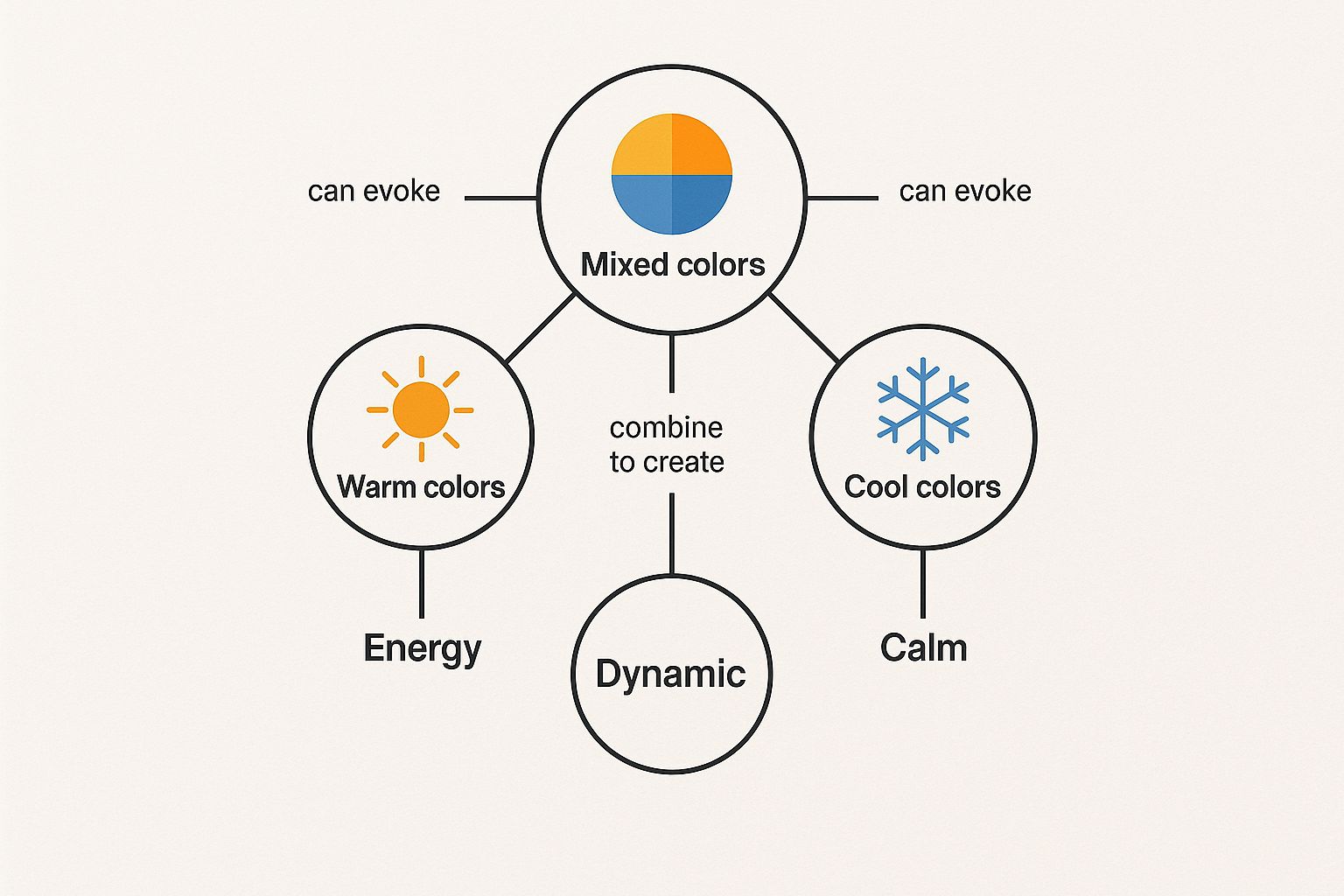
As you can see, colors have a huge impact. Warm tones like reds and ambers scream energy and passion, while cool blues and purples create a more sophisticated, chilled-out vibe.
Another fantastic tool for personalization is a gobo projector. This isn't as complicated as it sounds—it's just a light that lets you project a custom image. Think of a newlywed couple's monogram shining on the center of the dance floor, or a company's logo displayed prominently on a wall at a corporate gala. It's a simple touch that makes a huge impact.
Choosing the right mix is key, and you can see plenty of examples in our complete guide to dance floor lights.
Comparing Popular Dance Floor Light Types
To help you visualize how these different lights work for various events, here's a quick cheat sheet.
| Light Type | Primary Use | Atmosphere Created | Best For Events Like |
|---|---|---|---|
| Wash Lights/Uplights | General color wash, mood setting | Immersive, ambient, elegant | Weddings, corporate events, galas |
| Moving Heads | Dynamic effects, energy, visual interest | High-energy, exciting, concert-like | Parties, concerts, large receptions |
| Lasers | High-impact aerial effects | Futuristic, intense, thrilling | DJ sets, dance parties, product launches |
| Disco Balls | Classic, scattered light effect | Retro, fun, celebratory, magical | Weddings, birthday parties, 70s/80s nights |
| Gobo Projectors | Custom logos, monograms, patterns | Personalized, branded, unique | Weddings, corporate functions, themed parties |
Ultimately, the best lighting designs use a combination of these elements. You start with a solid foundation of color and then layer on movement and custom details to create an experience that's perfectly suited to your event.
The Rise of Interactive LED Dance Floors
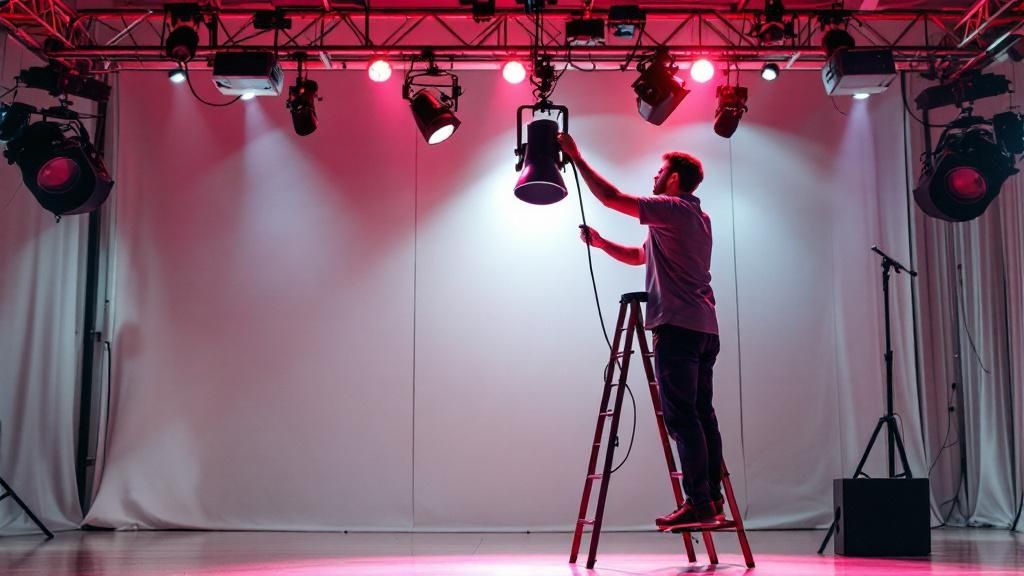
What if the dance floor was more than just a place to dance? What if it became the main event? That’s the awesome reality of interactive LED dance floors. Instead of just aiming lights at the floor, the floor itself becomes the light show, creating a stunning visual experience right under everyone's feet.
You're essentially turning a boring old patch of tile or wood into a massive, dynamic screen. It’s a total game-changer for events, pulling guests into an immersive world that standard overhead lights just can't match. The floor isn't just a stage anymore—it's the entire spectacle.
How Do These Things Actually Work?
So, how does the magic happen? At its heart, an LED dance floor is built from a bunch of interlocking modular panels. You can snap them together to create a floor of pretty much any size or shape you can imagine. Inside each panel is a grid of LEDs that can be programmed to display an endless variety of colors, patterns, and effects.
But the real fun starts with the "interactive" part. There are generally two ways these floors operate:
- Programmed Visuals: The floor can run pre-set light shows. Think mesmerizing effects like flowing water, a twinkling starry night, or bold geometric patterns that pulse in time with the DJ's set. It's a huge visual punch without needing any input from the dancers.
- Pressure-Sensitive Interaction: This is where it gets really cool. These floors have built-in sensors that react to movement. Every step, jump, and spin triggers a response—maybe a ripple of light that spreads outward, a burst of color, or a glowing trail that follows a dancer across the floor.
It completely changes the dynamic. Guests aren't just dancing on the floor anymore; they're dancing with it. The floor becomes a creative partner in the party.
More Than Just a Pretty Light
An interactive LED floor is so much more than a light source. It becomes a central part of your event's whole vibe and entertainment package. You can set a sophisticated mood with a gentle, starlit floor for a wedding's first dance, or you can crank up the energy with a wild, pixelated playground for a product launch.
The global market for LED dancing floors was valued at around $1.2 billion in 2023 and is expected to hit $2.9 billion by 2032. That massive jump shows just how much event planners are falling in love with the unique atmosphere these floors create. For a deeper dive into this trend, check out the full report from DataIntelo.com.
This isn't just a fad; it's a move toward more memorable, experience-driven events. An LED floor can even display custom graphics, a wedding monogram, or a company logo, making it a brilliant branding tool that feels like part of the fun, not a stuffy advertisement.
What to Consider Before You Rent
The "wow" factor is off the charts, but there are a few practical things to sort out before you book an LED floor.
First up, power. These floors can be thirsty for electricity. You absolutely need to check with your venue and the rental company to make sure the building's circuits can handle the load.
Next, think about the surface. The floor has to be installed on a perfectly flat and level area. If it's not, the panels won't connect properly, which can be unsafe and ruin the effect. This is a job for the pros—professional installation is a must. For more great ideas, take a look at our guide to dance floor lighting solutions.
Finally, let's talk budget. LED floors are definitely a premium rental item. But when you consider that they can often replace the need for a ton of other lighting and decor, the investment starts to make a lot of sense. It’s a true statement piece that will make your event the one everyone talks about for years to come.
Placing Your Lights for Maximum Impact
So, you've got a fantastic set of lights. That's just the beginning. The real magic happens when you know exactly where to put them to create that unforgettable vibe. It’s a lot like setting up surround sound speakers—you wouldn't just toss them in a corner and hope for the best, right? Strategic placement is what separates a decent setup from a professional, jaw-dropping experience.
When you position your dance floor lights correctly, you can completely transform a venue, pull your guests' attention where you want it, and build layers of visual excitement. It’s the difference between a flat, boring room and a dynamic space that practically buzzes with energy.
Building Your Lighting Foundation from the Ground Up
Any great lighting design starts from the floor and works its way up. The go-to technique here is uplighting. This is where you place light fixtures on the ground and point them straight up along walls, columns, or even drapery. It's a simple move that instantly adds depth, dimension, and a beautiful wash of color that frames your entire space.
Just by bathing the room's perimeter in your theme color—maybe a warm amber for a wedding or a cool blue for a corporate party—you create a solid foundation of ambiance. This little trick makes the room feel taller and more dramatic, pulling even the areas far from the dance floor into the experience. The impact is huge.
This same idea works wonders when you take the party outdoors. Smart placement can turn trees or architectural details into incredible, illuminated parts of your decor. If you're planning an open-air celebration, our guide to outdoor party lighting ideas is packed with tips to make any backyard or patio look amazing.
Think of uplighting as the primer coat for your masterpiece. It sets the mood and makes every other light you add on top look richer and more intentional. Without it, the room can feel dark and disconnected.
Elevating the Experience with Overhead Lights
Once your foundation is solid, it’s time to look up. Getting lights above the action is absolutely critical for creating those awesome, dance-floor-focused effects. The professional way to do this is with a lighting truss—that metal frame structure you see suspended over the dance floor at big events.
A truss is your secret weapon for a few reasons:
- Optimal Angles: It lets you aim your moving heads, wash lights, and effect lights straight down. This creates crisp patterns and beams that fill the floor without blinding your guests.
- Full Coverage: With lights positioned overhead, you can cover the entire dance area evenly. No more awkward dark spots where no one wants to dance.
- Professional Look: Let's be honest, a truss system just looks cool. It signals a high-quality, professional production and bumps up the whole feel of your event.
From this high-up vantage point, your moving heads can sweep across the crowd, your lasers can create stunning effects in the air, and your wash lights can flood the entire dance floor with color that pulses with the music.
Highlighting the Main Event
Finally, you need to point the spotlight—sometimes, literally. Key lighting, which is basically just spot lighting, is all about drawing attention to the most important people and moments. The happy couple's first dance? The CEO's big speech? You definitely don't want those happening in the shadows.
A dedicated spotlight, often a fixture called a Leko or a specialized moving head, can be used to perfectly illuminate things like:
- The newlywed couple during their first dance.
- The DJ booth, turning the performer into a real focal point.
- The wedding cake or another awesome decor piece you want everyone to see.
This focused beam of light is like a visual cue that tells everyone, "Hey, look here! This is important." It cuts right through all the other colors and movement, making sure the night's most special moments are seen clearly by every single person. When you layer your ambient uplighting, your dynamic overhead effects, and your focused key lights, you create a complete, professional, and truly breathtaking experience.
How to Choose the Right Lights for Your Event
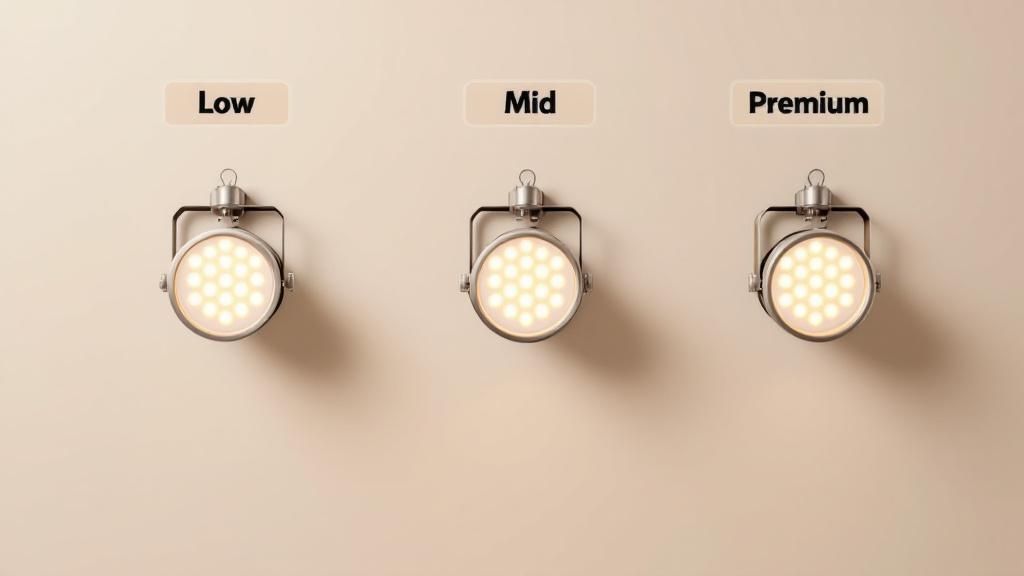
Alright, we’ve covered the different types of lights and where they go. Now, let's put it all together. Choosing the right lights for your dance floor isn’t about grabbing the most expensive or flashiest gear. It’s about creating a vibe—an experience that feels right for your specific event.
Think about it: the lighting that makes a wild 21st birthday party feel electric would be completely wrong for an elegant wedding reception. The real secret is to think like a designer and use light to tell your event's story.
Match the Lights to the Occasion
First things first, what's the event? What feeling do you want people to have when they walk in? Your lighting is one of the most powerful ways to set that mood instantly.
-
Weddings: This is all about romance, elegance, and, later on, a great party. A base layer of warm uplighting in amber or soft white is a fantastic starting point. A custom gobo of your monogram on the dance floor adds that personal, high-end touch. For the first dance? You can’t beat the classic, magical feel of a disco ball. We’ve got a ton more ideas in our guide to stunning wedding lighting ideas.
-
Birthday and Private Parties: Let loose and have some fun here! You want high energy and a celebratory atmosphere. A good mix of wash lights to paint the room with color, moving heads to sweep cool patterns across the crowd, and maybe even a few lasers for those peak party moments will get everyone rushing to the dance floor.
-
Corporate Events and Galas: For these, the vibe needs to be polished, professional, and branded. Use uplighting to drench the room in the company’s colors. A gobo projector is practically a must-have for displaying a crisp company logo, while intelligent moving heads can be programmed for a sleek, sophisticated look during presentations or networking.
Consider Your Venue and Budget
The room itself is a huge factor. A giant ballroom with soaring ceilings can handle a big, impressive truss setup packed with moving heads. But in a smaller, more intimate space, just a few well-placed uplights and a single cool effect light might be all you need to make it pop. Don't forget to check what kind of power the venue has and what lighting might already be built-in.
And of course, there's the budget. The good news? You don’t need to spend a fortune to create an incredible atmosphere. It's all about prioritizing. A couple of strategically placed uplights and one awesome effect light will always look better than a dozen cheap, uncoordinated lights thrown around the room.
This focus on creating immersive experiences is a big deal. The global stage lighting market—which covers everything from huge concerts to your wedding dance floor—was valued at $2.52 billion in 2022. It’s projected to hit $3.30 billion by 2028, which just shows how much people value memorable, well-lit events.
Understanding Your Control System
Finally, how are you going to run the show? This is what separates the pros from the amateurs. Having amazing lights is one thing; making them do the right thing at the right time is another.
The biggest mistake is a "set it and forget it" approach. A light show that looks the same during dinner, the first dance, and the peak party hour feels amateur. Dynamic control is what separates a good event from a great one.
Here are your main options, from dead simple to totally pro:
- Sound-Activated Mode: A lot of lights have a tiny built-in mic and will just flash along to the beat. It’s super easy and fine for a casual house party, but you have zero control. It's lighting chaos, really.
- Remote Controls: Some lighting packages include a simple remote. This gives you a little more control—you can switch colors or pick a pre-set program—but it’s still very limited.
- DMX Control: This is the industry standard for a reason. DMX (which stands for Digital Multiplex) is a system that lets a lighting tech program and sync up every single light fixture. It allows for absolute control over color, movement, speed, and brightness, creating a polished light show that builds with the energy of the night. For any major event like a wedding or corporate function, DMX control is essential.
Oops! Common Dance Floor Lighting Mistakes to Avoid
Having the best lighting gear is one thing, but knowing how to use it is what separates a forgettable night from an unforgettable one. Honestly, creating an amazing dance floor vibe is as much about what you don't do as what you do.
Let's walk through a few common blunders I see all the time. Steering clear of these will instantly make your event lighting look more professional and feel way more engaging.
The absolute most common mistake? I call it the "gymnasium look." This is when the dance floor gets blasted with super bright, flat white light. It's an instant mood killer. People feel like they're under a spotlight, making them totally self-conscious and not at all in the mood to dance. We're setting a mood here, not prepping for surgery.
The "Set It and Forget It" Trap
Another classic error is the "set it and forget it" mentality. Flipping on a few colored lights and letting them run on the same loop all night is a massive missed opportunity. A truly great light show should breathe and evolve right along with the party's energy.
Think of the night's progression:
- Cocktail Hour: Your lighting should be subtle, maybe some gentle color washes, just enough to set a sophisticated, conversational tone.
- First Dance: This is a moment for romance. Think soft, focused light on the couple—a single spotlight or a delicate, starry effect works wonders.
- Peak Party Time: Now's the time to let loose! Bring out the fast-moving heads, the quick color changes, and the patterns that sync up with the high-energy music.
A static setup just feels lazy and amateur. Your job is to guide the energy of the room, not just splash some color on the walls. For a deep dive into creating that perfect wedding glow, you should check out our guide on wedding reception lighting.
Darkness is just as important as light. It's the contrast that creates drama, excitement, and visual interest. A dance floor that's always lit up loses all its mystery and kills any chance for a dynamic build-up.
Poor Aim and Overdoing the "Wow" Factor
Finally, a quick word on your most powerful lights. That awesome laser show? It looks incredible… until it’s aimed right in someone's eyes. That’s not cool, and it can even be a safety issue. Always point high-impact lights like lasers and strobes above people's heads. You want stunning aerial effects, not blinded guests.
On that same note, don't go overboard with your most intense effects. A strobe light is the perfect punctuation for a 30-second beat drop in a high-energy song. But leave that thing on for five minutes straight? You're just giving everyone a headache.
Use your power tools wisely and sparingly for the biggest impact. When you avoid these simple mistakes, your lighting will be the hero of the party, not the villain.
Got Questions About Dance Floor Lighting? Let's Clear Them Up.
Still sorting through the details of your dance floor lighting? It's completely normal. Let's tackle some of the most common questions we get from clients, so you can lock in your lighting plan and feel great about it.
So, How Many Lights Do I Actually Need?
Honestly, there's no single right answer here—it all comes down to the size of your space and the atmosphere you're trying to create.
For a standard 15×15 foot dance floor, a good starting point is a set of 4-6 lights. You might have a couple of PAR cans to lay down a nice base color wash, then add one or two effect lights, like moving heads, to inject some energy.
The real secret is thinking in layers. You start with a foundational wash of color, then you layer on the dynamic lights for movement and texture. Trust me, a few high-quality lights placed thoughtfully will always beat a dozen cheap ones scattered all over the place.
What's This "DMX" Thing and Do I Need It?
Think of DMX as the conductor of your lighting orchestra. It’s a professional control system that lets a lighting pro program and sync all your lights together to create one seamless, incredible show.
For a small party at your house, you can probably skip it; most modern lights have a decent "sound-activated" mode that does the job. But for a wedding, a corporate event, or any time you need that polished, high-end feel? DMX is a non-negotiable. It's what allows you to perfectly time the lighting's color, speed, and intensity to match the vibe of every single moment, from the first dance to the final song.
Should I Rent or Buy the Lights?
This one is pretty straightforward and just depends on how often you’ll be using them.
- Renting: If you're planning a one-off event like a wedding or a big anniversary bash, renting is the way to go, hands down. Rental shops provide pro-level gear and often handle delivery and setup, which is a huge stress reliever.
- Buying: Buying only makes sense if you're in the business—a mobile DJ, an event planner, or just someone who throws epic parties on the regular. If you decide to buy, start with a solid, expandable kit. Get comfortable with the basics before you drop serious cash on more complex fixtures.
Ready to build a dance floor experience that your guests will be talking about for years? At 1021 Events, we live and breathe professional lighting design that turns any space into something special. From classy uplighting to high-energy moving heads, we’ve got the gear and the know-how to make it happen. Learn more about our event production services and get a quote today!
